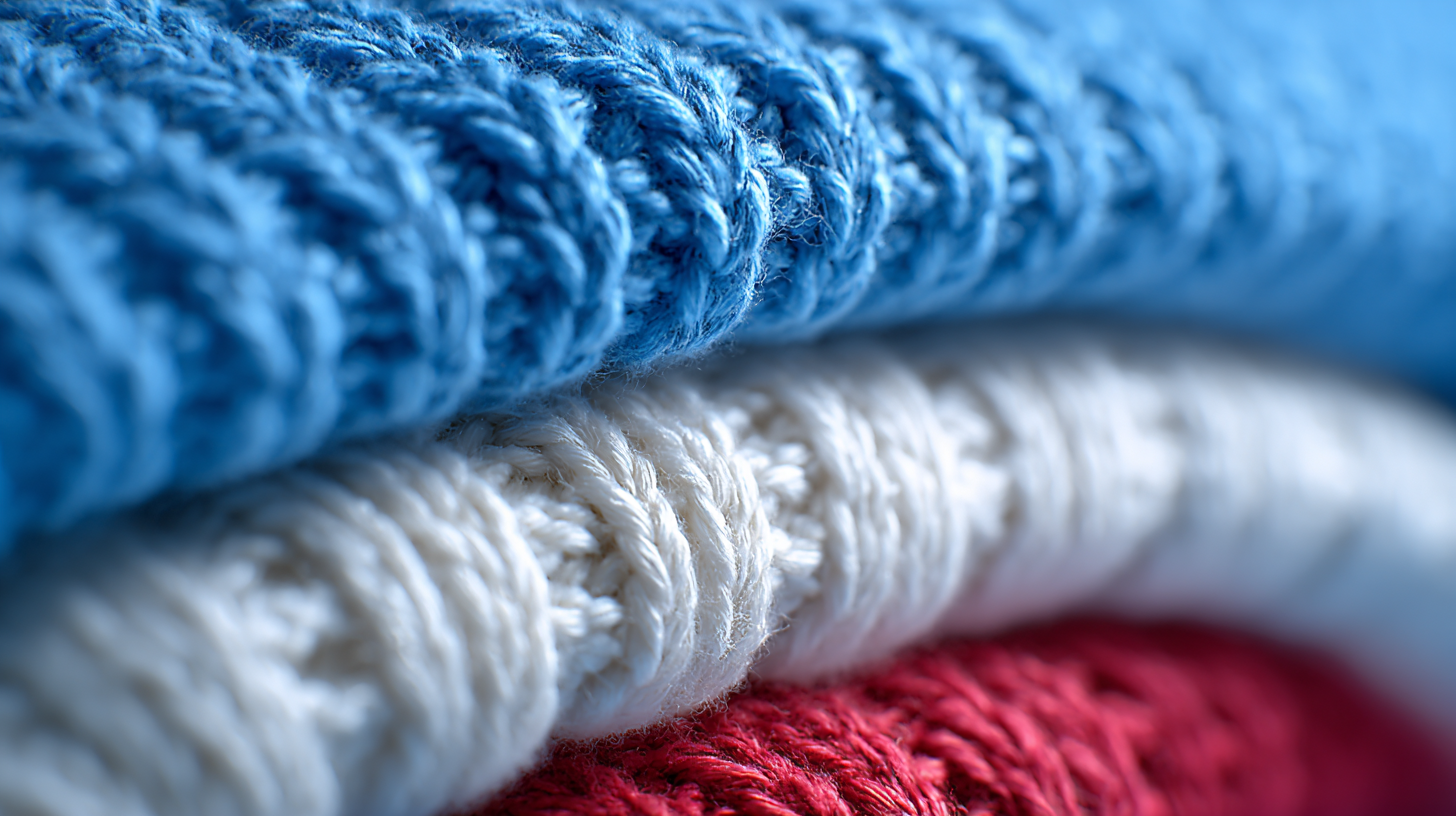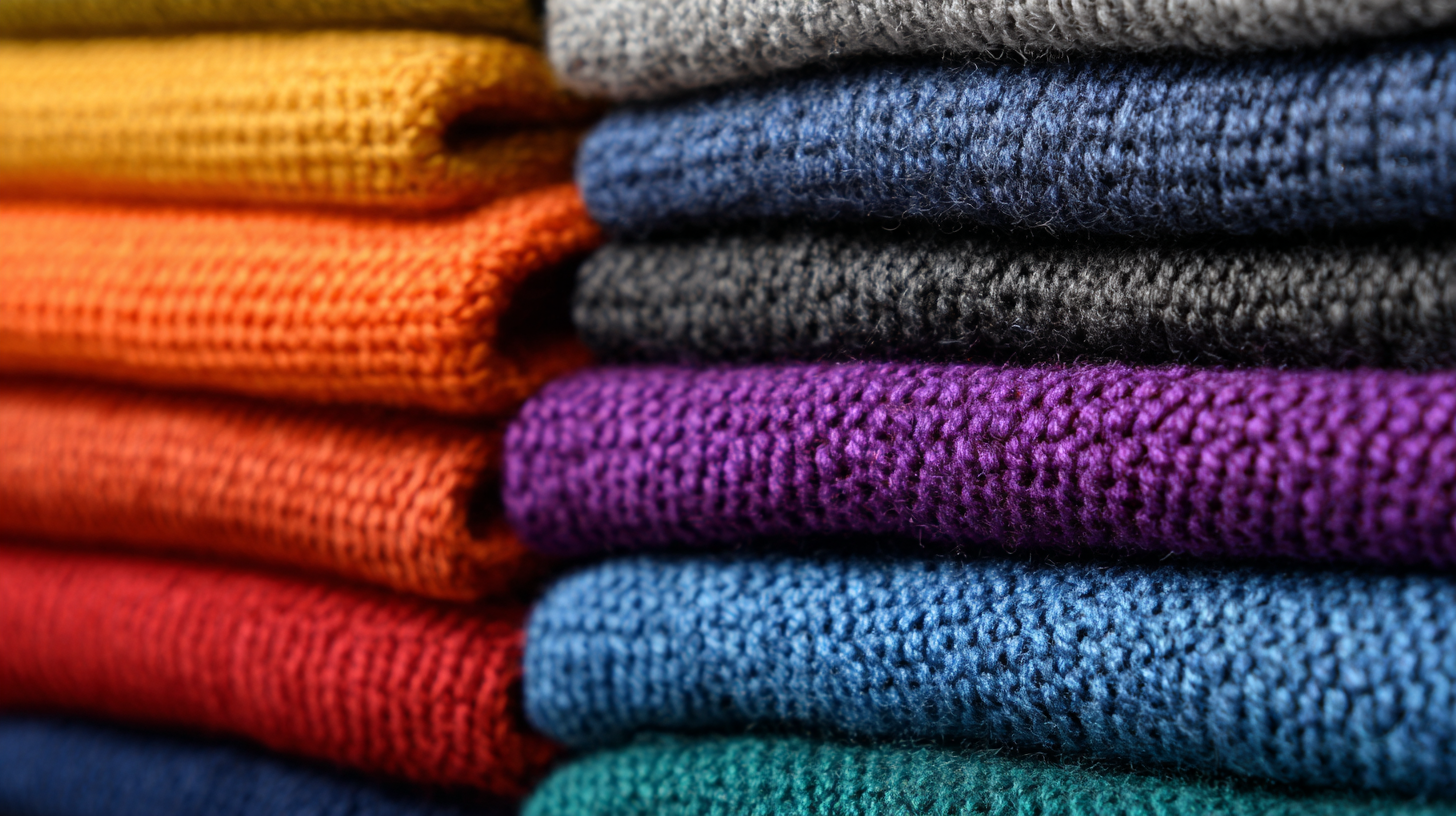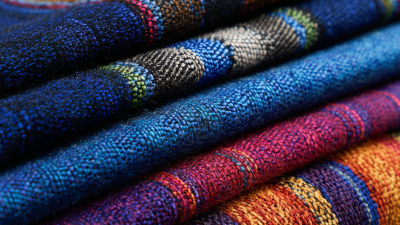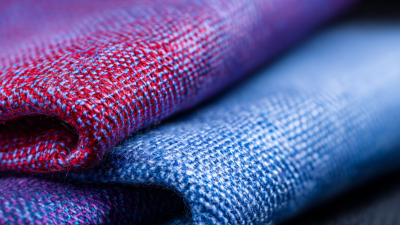As the fashion industry grapples with the pressing need for sustainability, innovative approaches are emerging that promise to reshape the landscape of textile production and consumption. One such advancement lies in the realm of Knitted Apparel Fabric, which is gaining recognition for its potential to combine aesthetic appeal with eco-friendly practices. This article explores the future of sustainable fashion through the lens of these innovative knitted fabrics, highlighting how their unique properties and manufacturing processes contribute to reduced waste and lower environmental impact. By examining current trends, technologies, and the role of consumer consciousness, we aim to illustrate how knitted apparel fabric not only aligns with the principles of sustainability but also paves the way for a new wave of responsible fashion choices that prioritize both style and ecological integrity.

The rise of knitted fabrics in sustainable fashion marks a pivotal shift in the industry, with innovations driving both eco-friendliness and style. According to the Global Sustainability Fashion Report 2023, approximately 60% of consumers now prioritize sustainability in their fashion choices, prompting brands to invest in sustainable materials like organic cotton and recycled fibers. Knitted fabrics, with their flexibility and durability, offer an ideal solution for creating versatile and long-lasting apparel. This shift not only reduces waste but also supports a more circular economy.

Tips for incorporating knitted fabrics into your sustainable wardrobe include choosing pieces made from eco-friendly materials and exploring brands that emphasize transparent supply chains. Look for labels that utilize a blend of recycled plastics and organic fibers, as they often commit to lowering their carbon footprint. Additionally, consider the longevity of knitted garments; investing in quality pieces can significantly decrease your overall consumption and environmental impact.
As the trend continues to grow, industry experts predict that the market for sustainable knitted fabrics will expand by over 20% by 2025. This surge reflects consumers’ increasing demand for stylish yet sustainable options, leading brands to innovate in their approaches to textile design and production methods, thereby reinforcing the importance of knitted apparel in the future of fashion.
The knitting industry is rapidly evolving towards sustainability through innovative techniques that prioritize eco-friendly practices. As we approach 2025, adoption of automated knitting machines and AI-driven design solutions is reshaping textile production. According to industry reports, these advancements significantly reduce waste and energy consumption in manufacturing processes. For instance, recent advancements in biodegradable yarns are allowing manufacturers to create products that not only meet consumer demand for sustainability but also contribute to a circular economy by minimizing textile waste.
Moreover, the implementation of digital fabrication technologies is revolutionizing fabric construction, making it possible to produce customized and complex knitted structures. This transformation not only enhances production efficiency but also supports sustainable practices by lowering the carbon footprint associated with traditional textile production methods. Industry insights reveal that by integrating these innovative knitting techniques, apparel brands can fulfill the growing consumer demand for sustainable options, paving the way for a more responsible future in fashion.
This chart illustrates the environmental impact of various sustainable knitted apparel fabric innovations, measured by the CO2 emissions saved per kilogram. As the demand for eco-friendly fashion grows, these materials play a crucial role in reducing the fashion industry's carbon footprint.
The rise of digital technologies is transforming the landscape of knitted textiles, paving the way for a more sustainable future in fashion. According to a report by McKinsey, the global market for sustainable fashion is projected to reach $8 trillion by 2025. Innovations such as 3D knitting and digital printing are not only enhancing design capabilities but also minimizing waste. For instance, 3D knitting technology allows brands to produce garments with intricate designs without the excess material typically encountered in traditional manufacturing processes.
As the industry embraces these advancements, it’s important for fashion brands to focus on sustainable practices. Tips for integrating digital technologies include adopting automated knitting machines that precisely calculate yarn usage and investing in software that helps forecast trends and optimize inventory. Utilization of digital sampling can further cut down on fabric waste, ensuring that only the necessary materials are produced.
Furthermore, consumer engagement plays a critical role. Brands are now leveraging augmented reality (AR) and virtual reality (VR) to create immersive shopping experiences, helping customers visualize products before purchase. This shift not only enhances customer satisfaction but also encourages conscious consumerism, fostering a deeper appreciation for sustainable fashion practices. Embracing these digital technologies will undoubtedly define the future of knitted textiles and sustainable fashion.
| Innovation | Description | Sustainability Impact | Digital Technology Used |
|---|---|---|---|
| Recycled Fibers | Knitted fabrics made from 100% recycled materials. | Reduces landfill waste and conserves raw materials. | 3D knitting technology |
| Smart Textiles | Added functionalities like moisture management and temperature control. | Enhances garment longevity and user experience. | IoT integration and wearable tech |
| Biodegradable Yarns | Yarns that fully decompose after their lifecycle. | Minimizes environmental impact post-consumption. | Digital weaving technology |
| Zero-Waste Knitting | Patterns designed to eliminate fabric waste during production. | Maximizes resource efficiency. | CAD and digital patterning tools |
| Customizable Knits | Fabrics that can be tailored in design and fit using digital interfaces. | Promotes consumer engagement and reduces return rates. | 3D modeling and simulation software |
Sustainable fashion is experiencing a transformative shift, particularly in the realm of knitted apparel. As consumer demand for environmentally friendly products grows, brands are increasingly adopting sustainable practices. Research indicates that the global knitwear market is projected to expand from USD 996.79 billion in 2025 to an astonishing USD 2,481.20 billion by 2033. This indicates a robust interest in knitwear as a viable option within the sustainable fashion landscape.
Moreover, the rise of hyper-personalization enabled by AI and digital tools plays a pivotal role in shaping consumer trends. Personalized clothing not only enhances customer satisfaction but also supports sustainable practices by reducing overproduction and waste. Companies that harness these technologies can tailor their offerings to match individual preferences while maintaining a commitment to environmental sustainability. As luxury knitwear gains traction, it becomes clear that innovation in this sector is key to appealing to conscientious consumers who prioritize both style and sustainability in their fashion choices.

The world of sustainable fashion is rapidly evolving, particularly with the rise of knitted apparel fabric innovations. However, this sector faces a variety of challenges. A report from the Textile Exchange reveals that the global demand for sustainably produced textiles is projected to reach $500 billion by 2025. As consumers become increasingly aware of environmental issues, brands are pressured to adopt sustainable practices, which often require substantial investment in innovation and technology.
Despite these challenges, opportunities abound for knitted fabric innovations. With advancements in materials such as recycled polyesters and bio-based yarns, the knitted fabric sector is positioned to lead the sustainable fashion movement. According to a study by the Global Fashion Agenda, 84% of fashion companies acknowledge that sustainability is critical for their future growth. This indicates a clear shift towards adopting greener practices, facilitating new partnerships and investment in sustainable technologies that can enhance the performance and longevity of knitted apparel. Leveraging these innovations not only meets consumer expectations but also sets brands apart in a competitive market.





